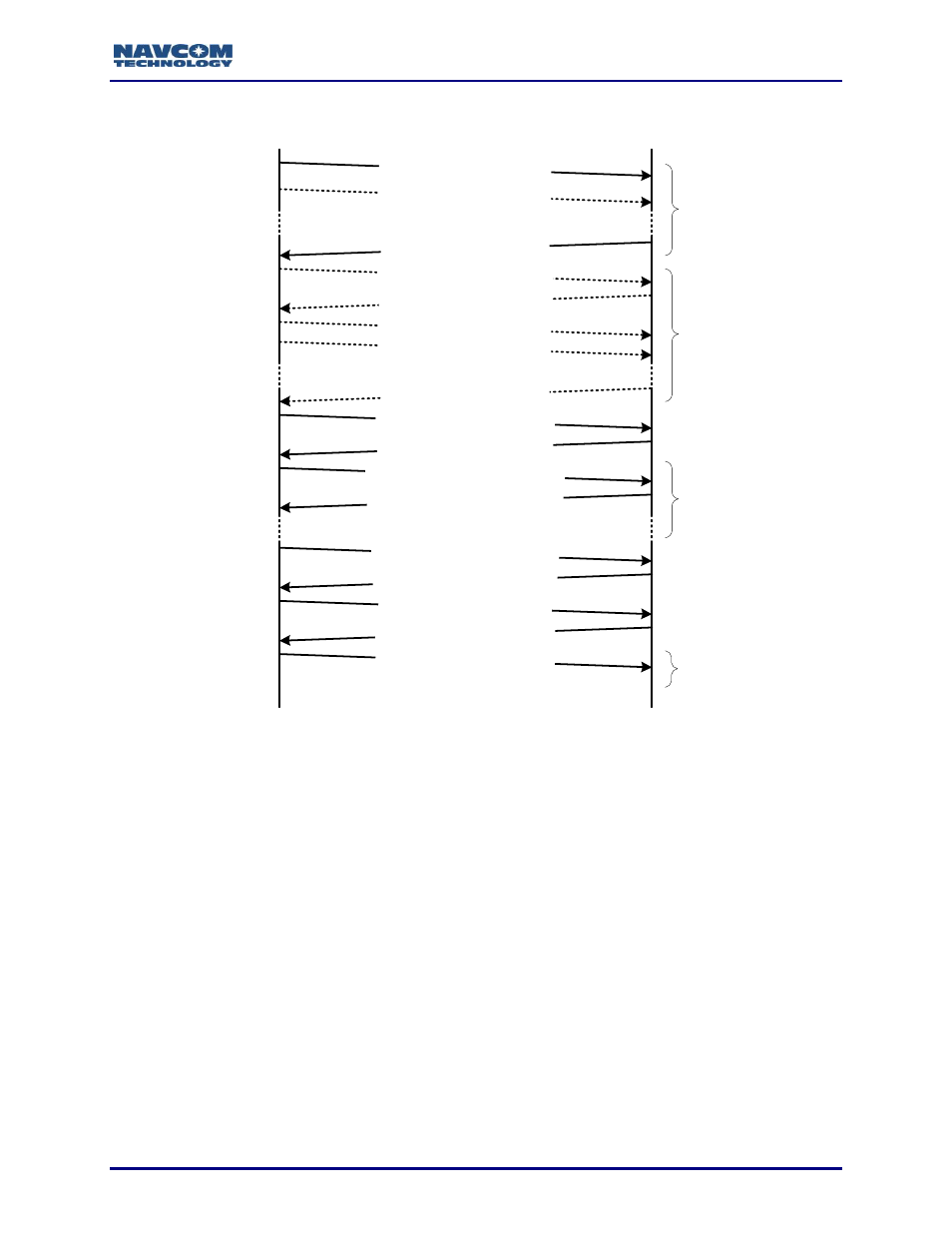Reserved, Figure 2: bootloadpiob message protocol, Figure 2 – NavCom Sapphire Rev.J User Manual
Page 80: 21 reserved

Sapphire Technical Reference Manual Rev. J
80
User Application
Receiver
[BOOTLOADPIOB]NB_PingCmd
[BOOTLOADPIOB]NB_PingCmd
[BOOTLOADPIOB]NB_PingR
ep
[BOOTLOADPIOB]NB_BaudCmd
[BOOTLOADPIOB]NB_BaudR
ep
Note 1
Note 2
[BOOTLOADPIOB]NB_PingCmd
[BOOTLOADPIOB]NB_PingCmd
[BOOTLOADPIOB]NB_PingR
ep
[BOOTLOADPIOB]NB_SetupCmd
[BOOTLOADPIOB]NB_Setup
Rep
[BOOTLOADPIOB]NB_LoadDataCmd
[BOOTLOADPIOB]NB_LoadD
ataRep
Note 3
[BOOTLOADPIOB]NB_ChkCrcCmd
[BOOTLOADPIOB]NB_ChkCr
cRep
[BOOTLOADPIOB]NB_ProgCmd
[BOOTLOADPIOB]NB_WriteF
Rep
[BOOTLOADPIOB]NB_ResetCmd
Note 4
Figure 2: BOOTLOADPIOB Message Protocol
The PC should send NB_PingCmd at a rate of 1-2 Hz until a reply is received.
Changing the port baud rate is optional and is ignored if downloading using the
Ethernet or Bluetooth ports.
The PIO firmware download supports a sliding window if the user chooses to use it.
If a NB_LoadDataCmd is not acknowledged, the user must retransmit all messages
in the window. For high speed ports (Ethernet, Bluetooth, USB), the window should
be kept small.
The NB_ResetCmd and NB_ResetRep are used by the cold bootloader but not the
warm bootloader. If desired, the user may send NB_PingCmd messages to detect
when the PIO board has completed the reset sequence.
1.21 Reserved
